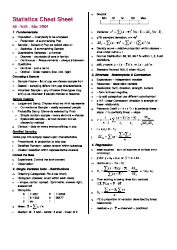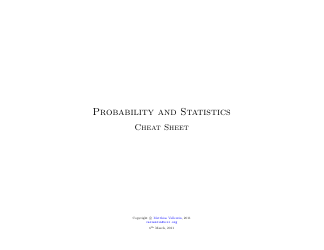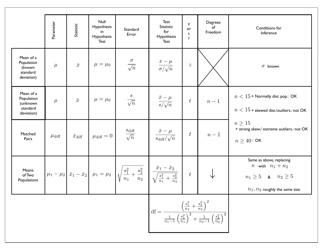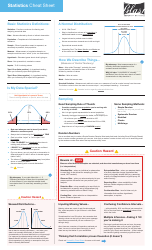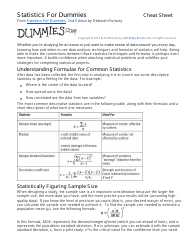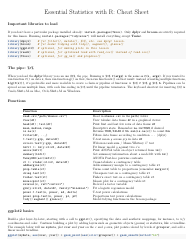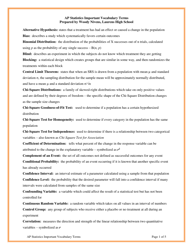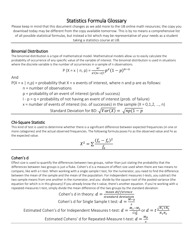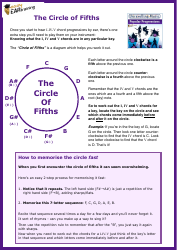Statistics Cheat Sheet - Inference
A statistics cheat sheet for inference is a resource that helps individuals understand and apply statistical techniques for making conclusions and predictions based on collected data. It provides a quick reference guide for various statistical tests and formulas used in inferential statistics.
FAQ
Q: What is inference?
A: Inference is the process of drawing conclusions or making predictions based on available information.
Q: What are the types of inference?
A: There are two main types of inference: deductive inference and inductive inference.
Q: What is deductive inference?
A: Deductive inference is the process of drawing specific conclusions based on general principles or premises.
Q: What is inductive inference?
A: Inductive inference is the process of drawing general conclusions or making broad predictions based on specific observations or evidence.
Q: What is statistical inference?
A: Statistical inference is the process of making conclusions about a population based on a sample of data.
Q: What are the key components of statistical inference?
A: The key components of statistical inference are estimation and hypothesis testing.
Q: What is estimation in statistical inference?
A: Estimation is the process of using sample data to estimate unknown population parameters, such as the mean or proportion.
Q: What is hypothesis testing in statistical inference?
A: Hypothesis testing is the process of using sample data to make decisions or draw conclusions about a population based on the observed data.
Q: What is a confidence interval?
A: A confidence interval is a range of values within which the true population parameter is estimated to lie with a certain level of confidence.
Q: What is a p-value?
A: A p-value is a measure of the strength of evidence against a null hypothesis in hypothesis testing.















